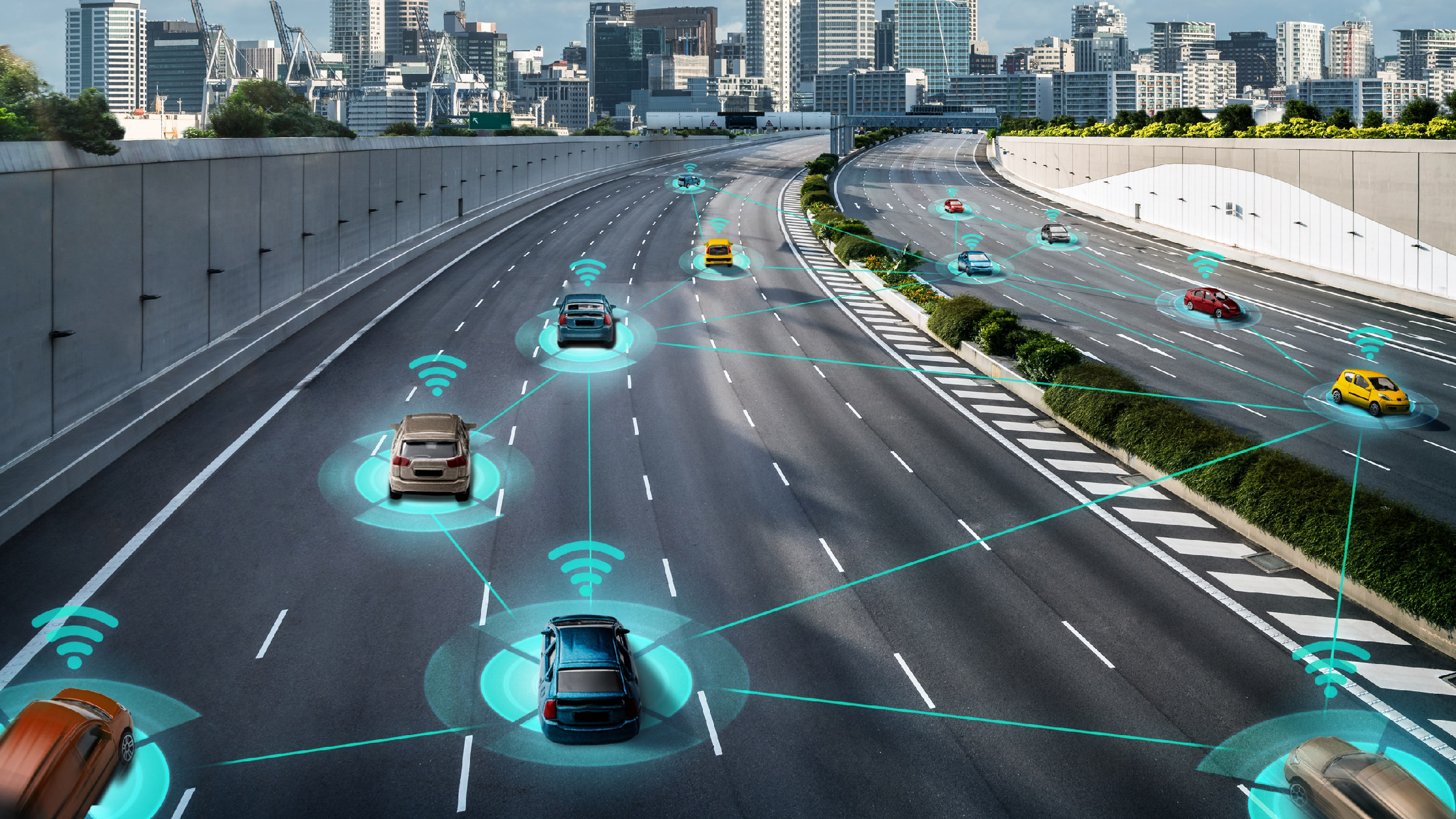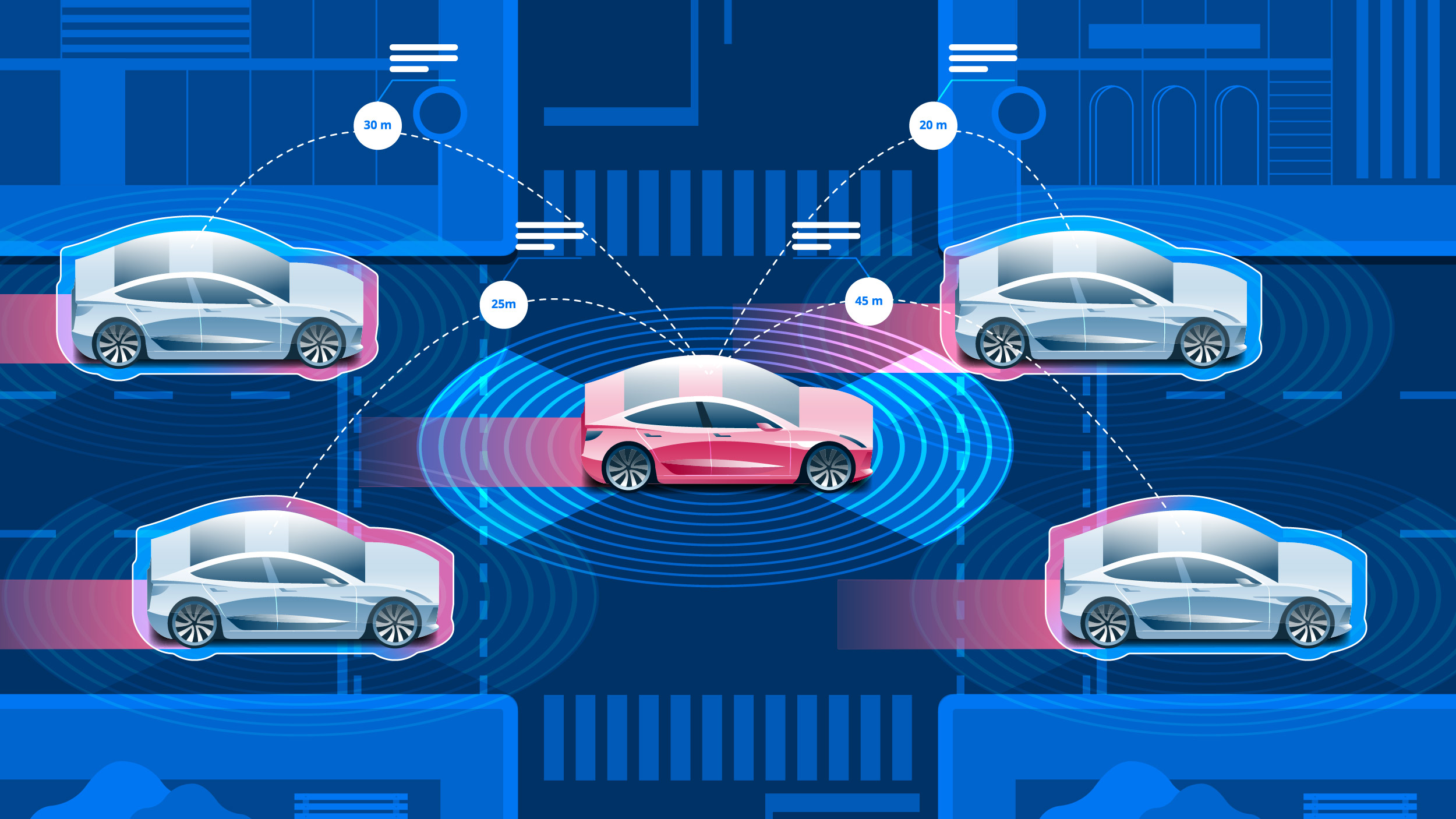The possibility of connected driverless automobiles using 5G networks is still some years away because 5G mobile networks are still in the early phases of deployment. Autobahn-level research speeds are being reached in autonomous driving as carriers pour billions into 5G networks.
5G and linked cars will need to coexist on the road if autonomous vehicles are ever to become a reality. By utilizing multi-access edge computing (MEC), made possible by the reduced latency of 5G, the self-driving car can be more affordable, secure, and dependable.
How frequently do issues with vehicles, such as flat tires, steering issues, or brake issues, result in accidents on the road? Around 94% of all automobile accidents are the result of human mistakes, according to data from the U.S. DOT (United States Department of Transportation). Just 2% of accidents are caused by a technical malfunction.
By further dissecting the data, we discover that speeding is responsible for one out of every four fatalities. Startling data show that most traffic accidents and a quarter of all fatalities due to driving are fully avoidable. Thus, connected vehicles are the key to revolutionizing traffic safety.
How 5G and the Future of Autonomous Vehicles Are Intertwined
For thousands of cars to connect to a high-speed 5G network concurrently in a city center, as promised by fully driverless vehicles, is necessary. While most IoT applications can be run on 4G, which is a significant improvement over 3G, completely autonomous vehicles need higher bandwidth and reduced latency. In order to achieve this, numerous American cities—particularly bigger ones like Los Angeles and New York—are extending their 5G coverage. Although these networks are not necessarily put in place to specifically help autonomous vehicles, 5G automobiles will be able to connect to the new networks and profit from this infrastructure.

An intriguing technology called Intelligent Speed Assist (ISA) is expected to be used in the creation of driverless vehicles. Using ISA, a GPS system figures out the speed of the car and then compares that to a map with established speed limits. The ISA system can alert the driver or possibly even slow down the automobile if it detects that the vehicle is traveling faster than the posted limit.
A map that incorporates speed limits will be crucial for autonomous vehicles. Self-driving cars will be able to read speed limit signs thanks to machine learning and artificial intelligence, but the signs might not be common enough to keep the vehicle informed. In some tiny towns, there aren’t many signs, and in other places, there could not be any signs at all.
Lane assist is yet another intriguing innovation that is currently present in modern automobiles like those made by BMW. To locate itself on the road and maintain its lane, an automobile can employ GPS information, cameras, and/or radar. With further development, this technology will eventually enable autonomous vehicles to maintain lane separation under all traffic conditions and speeds. When lane assist driving is fully evolved, cruise control will resemble a well-trained horse that always trots at a constant speed.
5G and the Future of Autonomous Vehicles Benefits
The development of autonomous vehicles will be supported by new application options made possible by the 5G network, which will also promote a quicker link between transportation systems. People will have the freedom to make their own decisions in the future, but they will also be able to cooperate and communicate.
Safety Takes Priority
Of course, when operating a car, safety concerns come first. In addition to the 4G capabilities, 5G offers special features for safety-related requirements that no other wireless network can.
Unexpected or unplanned events pose a limitation for automatic systems. In this case, a “autopilot” will decide to disengage the gadget if there is any doubt regarding safety. In an autonomous car, the task and responsibility of driving would thereafter be returned to the human driver. But, if the driver does not take control of the vehicle immediately or swiftly enough, the car will be pulled to the side of the road in a secure driving mode.
For instance, a remote traffic controller may use 5G to drive the vehicle. But the remote control through an operator is wholly impractical without a 5G network, which offers crucial characteristics like guaranteed network resources and incredibly fast reaction times.
Multi-access Edge Computing
The two key features of 5G-enabled vehicular communication are ultra-low latency (up to 1 ms) utilized in ACVs and low latency (up to 100 ms) used for safety measures. One method to achieve such low latency is to move the core and key functionalities closer to the user or the client. It is thought that this is cutting-edge. It is impossible to exaggerate the value of multi-access edge computing (MEC) in delivering a range of services to the relevant network.

Every edge has a capability that allows for multi-vendor hosting of the majority of mobile edge apps. Technology called network functions virtualization makes it possible to offer these services (NFV). For connectivity, the vehicles might use a range of access technologies, such as WiFi, 802.11p, and 5G. MEC is suitable for ACV-to-ACV communication, however because latency requirements for Traffic Information Systems (TIS) are adjustable, it can be important. This is so because TIS does not mandate stern latency laws. Hence, using MEC can even slightly reduce latency, which enhances user experience.
Network Slicing
The earlier sections of this article covered how 5G complements all of the current access technologies by offering a broader variety. The main challenge is managing all of the networks using various access technologies under the banner of 5G because there are many networks using various access technologies. Network slicing provides a solution to this problem by logically dividing the networks.
In the case of ACVs, for instance, the networks can be segmented based on the applications and specifications. For example, mission-critical system applications, infotainment applications, and safety applications. As a network slice, each application can be logically divided. Applications involving safety demand dependable, low-latency message transmission. Applications for infotainment seek for high bandwidth. Systems that are mission-critical require extremely quick and impulsive information sharing, particularly in times of emergency. Network slicing aids in preserving the security and integrity of vehicle networks.
To Infer On This
The autonomous vehicle’s long-term road map includes more than just quick, low-latency connectivity for secure driving. The intelligent self-driving vehicle will contribute to the creation of smart cities and enhance the travel experience for passengers in all types of vehicles, not just cars. By connecting to children’s personal gadgets like tablets and smartphones, a self-driving car will increase the entertainment possibilities available to them. Similarly, 5G connectivity might improve tourism by enabling real-time, contextual content on buses and boats. Real-time information provided by 5G networks and enhanced head-up displays will provide drivers better views of the road.




